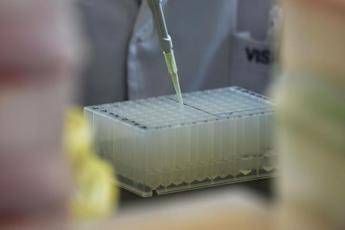New Genetic Form of Alzheimer’s Disease Discovered by Spanish Researchers
A groundbreaking study led by researchers from the Sant Pau Research Institute in Barcelona has revealed a new genetic form of Alzheimer’s disease. The study, published in ‘Nature Medicine’, highlights the significant impact of the ApoE4 gene on the development of the disease.
The research team, led by Juan Fortea, director of the Memory Unit of the Neurology Service at the institute, found that individuals with two copies of the ApoE4 gene, known as ApoE4 homozygotes, are at a significantly higher risk of developing Alzheimer’s. Over 95% of individuals over the age of 65 with two copies of the gene exhibited biological features of Alzheimer’s in the brain or biomarkers of the disease in cerebrospinal fluid and PET scans.
Fortea explains, “Having two copies of the ApoE4 gene could represent a new genetic form of Alzheimer’s disease. This discovery is crucial as it affects a small but significant portion of the population.”
The researchers analyzed data from over 3,000 brain donors, including samples from 273 ApoE4 homozygotes, to assess the Alzheimer’s risk in individuals with this genetic variant. The results showed that virtually all ApoE4 homozygotes exhibited signs of Alzheimer’s disease by age 55, with abnormal levels of amyloid protein in the cerebrospinal fluid and positive amyloid PET scans.
The implications of this study are significant, suggesting that the ApoE4 genetic variant may not only be a risk factor for Alzheimer’s but could represent a distinct genetic form of the disease. This finding could lead to the development of personalized prevention strategies and targeted therapeutic approaches for individuals with two copies of the gene.
Víctor Montal, a researcher involved in the study, emphasizes the importance of monitoring ApoE4 homozygotes from an early age for preventive interventions. The research opens up new possibilities for understanding and treating Alzheimer’s disease, providing hope for better outcomes for those at high genetic risk.
